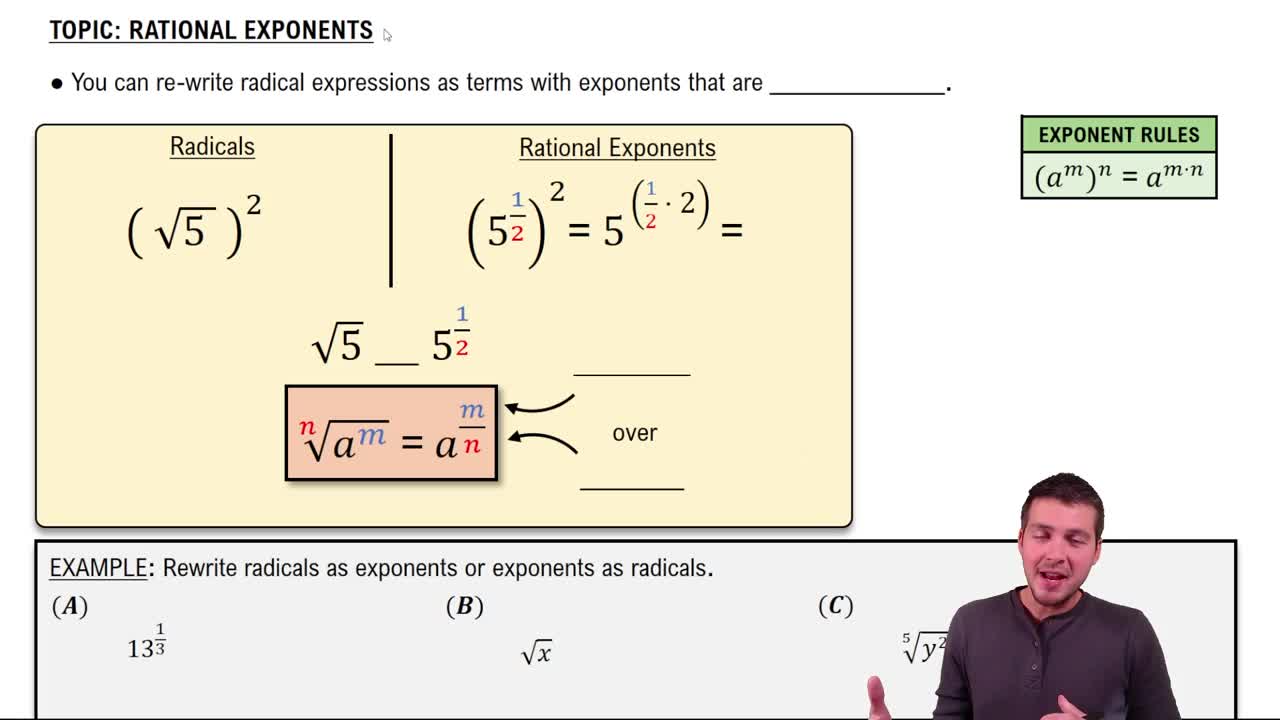Here are the essential concepts you must grasp in order to answer the question correctly.
Rationalizing the Denominator
Rationalizing the denominator involves eliminating any irrational numbers from the denominator of a fraction. This is typically achieved by multiplying both the numerator and the denominator by a suitable expression that will result in a rational number in the denominator. For example, if the denominator is a square root, multiplying by the same square root can help achieve this.
Recommended video:
Rationalizing Denominators
Simplifying Radicals
Simplifying radicals refers to the process of reducing a square root or other root to its simplest form. This involves factoring out perfect squares or other factors from under the radical sign. For instance, √18 can be simplified to 3√2, as 18 = 9 × 2 and √9 = 3.
Recommended video:
Adding & Subtracting Unlike Radicals by Simplifying
Properties of Exponents
Properties of exponents are rules that govern how to manipulate expressions involving powers. Key properties include the product of powers, quotient of powers, and power of a power. Understanding these properties is essential when simplifying expressions that involve roots, as they help in rewriting and reducing terms effectively.
Recommended video:
 Verified step by step guidance
Verified step by step guidance Verified Solution
Verified Solution

